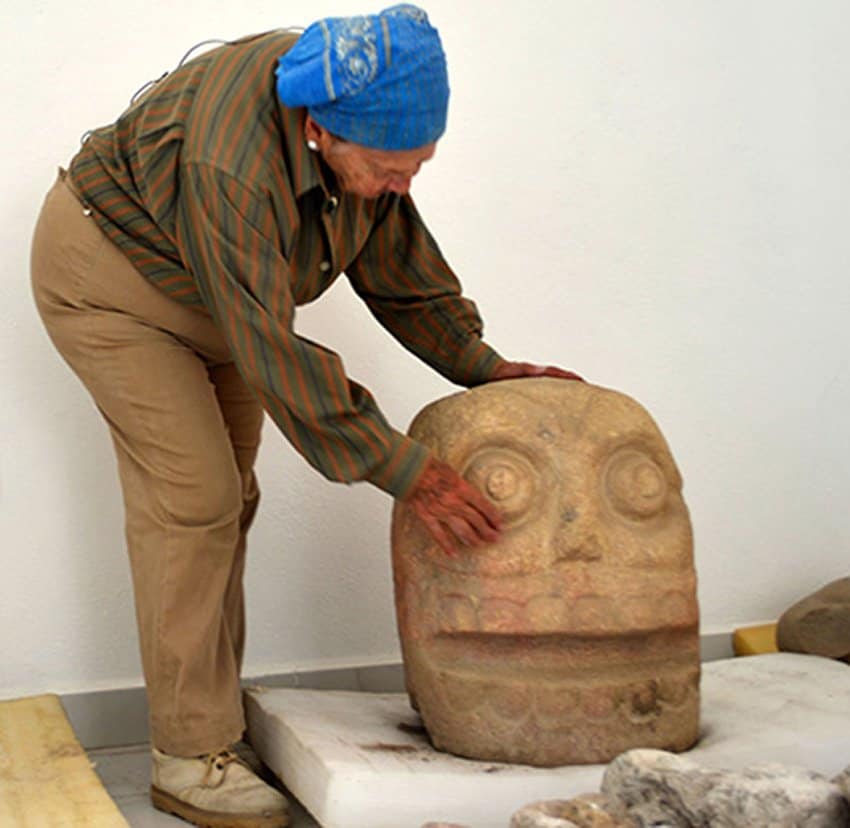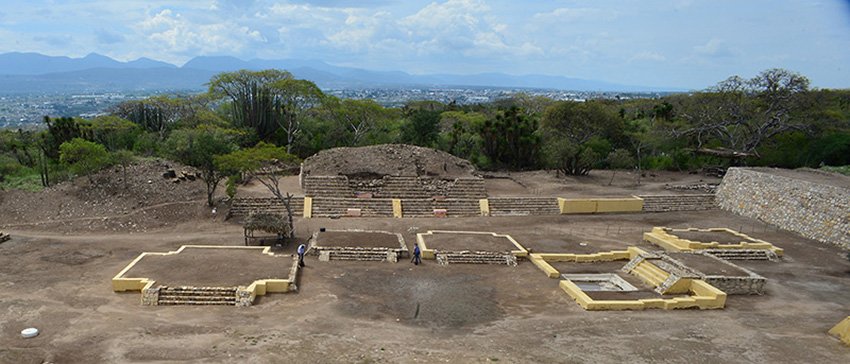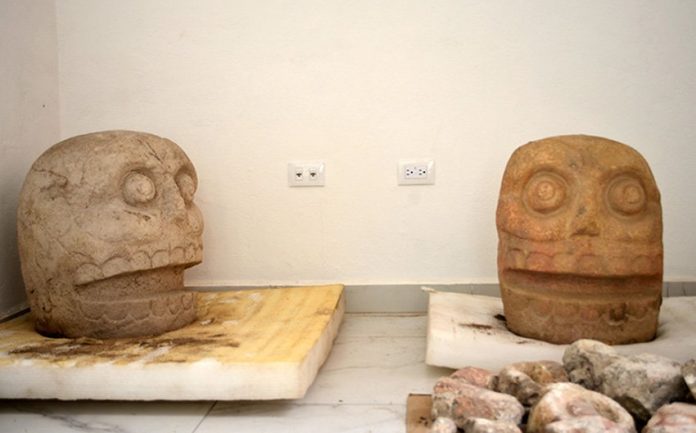Archaeologists have discovered for the first time a temple dedicated to an important pre-Hispanic deity known as the “flayed lord.”
A team of archaeologists from the National Institute of Anthropology and History (INAH) uncovered the temple dedicated to Xipe Tótec – a god of fertility and regeneration – in the Ndachijan-Tehuacán archaeological zone in the state of Puebla.
The site features two sacrificial altars and three stone sculptures depicting the “flayed lord” among other architectural elements located at the base of a small pyramid. It is believed to have been in use between 1000 and 1260 AD.
Two of the sculptures represent flayed skulls, leading INAH archaeologist Noemí Castillo Tejero said, while the third is of a torso covered with the skin of a person who had been sacrificed and also features a loincloth made of feathers.
The torso “is sculpturally a very beautiful piece,” Castillo said.
“It measures approximately 80 centimeters and has a hole in the belly that was used . . . to place a green stone and ‘endow life’ for the ceremonies,” she added.

The torso has a left arm and parts of both legs, leading the INAH team to believe that they may find other detached parts of the “ritually fragmented” sculpture.
Castillo believes that each of the volcanic rock, 200-kilogram, 70-centimer-high skulls were made by different artisans due to contrasts in their features and slight variations in their size.
The rock, possibly rhyolite, is believed to have been transported to the site from elsewhere.
In pre-Hispanic Mexico, one of the most important celebrations for several cultures was known as Tlacaxipehualiztli, which means “to wear the skin of the flayed” in Nahuatl.
The festival took place on two circular sacrificial altars, such as those found at the newly-discovered Puebla site.

On one, captives were sacrificed in gladiatorial fights or by being slain with arrows while on the other, a ritual flaying of the victims occurred as a tribute to Xipe Tótec.
Priests would subsequently wear the skins of those sacrificed for a period after which they placed them in small holes in front of the altars.
Castillo said the two stone skulls the INAH team found were used to cover those holes.
All three sculptures will be subjected to in-depth study to determine their age, what kind of stone they are made of and how they were carved.
They are then expected to be placed in the archaeological site’s museum.
Castillo said it has not yet been decided whether the new discovery will be opened to the public or whether it will be covered again with earth once the INAH team has concluded its exploration.
Mexico News Daily
